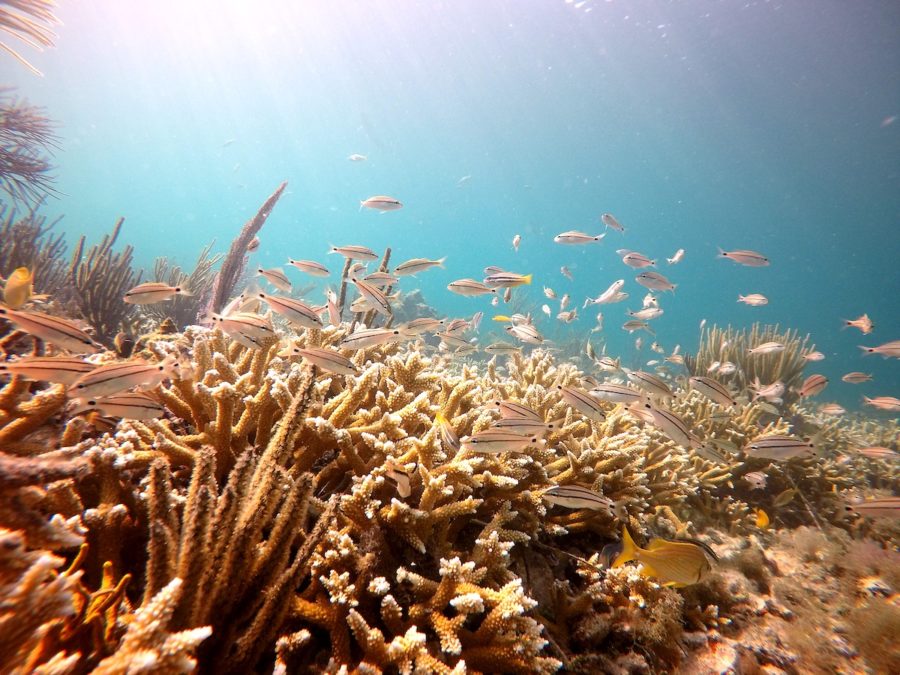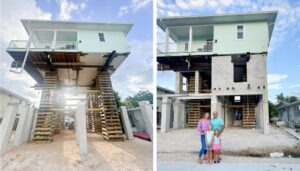At the end of the last hurricane season, The Nature Conservancy (TNC) began assessing the potential of implementing an innovative insurance program for Florida’s coral reefs.
Reef insurance is exactly what it sounds like — an insurance policy on a coral reef. Unlike car insurance, which reimburses for damages assessed after a car accident, reef insurance will finance repairs and restoration of a coral reef when a triggering event, like a major storm or hurricane, occurs.
“This is an insurance policy for natural assets,” said Rod Braun, TNC’s climate and coastal resilience program manager in Florida. “It’s a parametric policy, meaning it pays out on a ‘trigger’ and not based on damages assessed by an adjuster after a hurricane. It allows a team to get out and repair the reef quickly after a storm, so the reef can bounce back much more quickly and be more resilient,” without going through traditional insurance adjustment and assessment procedures for loss calculation.
In this way, skilled “triage” work and cleanup of hurricane damage to reefs will be financed by sufficient and rapid funding, allowing for immediate, large-scale repairs to occur as soon as possible. TNC worked with several other agencies and university partners after Hurricane Irma to do similar work without the insurance funding.
“In the Keys, we might have to reattach branches of branching corals, upright coral heads or reattach coral nursery setups,” Braun said. “In Irma, large pieces of reef collapsed and moved around, so we might be looking at also correcting structural damage. Structure plays a big role in breaking down wave energy.”
Braun suggested that the “brigade” of restoration workers who might be deployed in the event of a storm in Florida could include TNC, the Florida Fish and Wildlife Conservation Commission, state agencies and independent contractors.

The insurance program will also be market-driven.
Globally, coral reefs play a vital role in protecting valuable coastline and stopping storm erosion, Braun said. A recent study between TNC and the United States Geological Survey found that reefs break down wave energy and protect some $1.5 billion worth of coastline assets in Florida and $675 million in Hawaii.
“A category 3 or higher storm damages the reef,” Braun told the Weekly. “A policy like this would add one more layer of protection to our coral reefs. If we bring more attention here, we can bring more money to the management of coral reefs and help make our reefs more resilient against threats like hurricanes.”
To move the effort forward, Bank of America made a $1 million grant to TNC in September 2019 to fund a feasibility study and TNC’s research to support the expansion of a nature-based insurance plan in Florida and Hawaii.
“We’re going through the process right now to see how we can insure against a threat like a hurricane,” said Braun. “We’re talking to different insurance companies to see if we can insure a natural asset in Florida. We know we can’t just buy a policy on a reef in Florida, so we’re doing our due diligence.”
The feasibility study is exploring whether there are enough enabling conditions and interest to move toward a policy in Florida. TNC’s scientists hope the feasibility study will result in an innovative and cost-effective solution to coastal flooding and other risks related to major storms.
“TNC is reaching out to potential partners and stakeholders to gauge interest,” Braun said. “Initial response has been pretty good overall. People generally feel like the reefs are important and that management is underfunded.”
The study will look into potential financing or funding sources, and will explore state, county, hotel industry and more.
This novel approach to shoreline protection is actually the second joint effort between TNC and Bank of America. Last fall, they partnered with the local government, scientists and tourism industry to establish the first-ever reef insurance policy in Quintana Roo, Mexico. Funds from an existing fee paid by beachfront property owners and other sources were funneled into a trust which continues to finance regular repair and maintenance of Quintana Roo’s local reef and beaches in addition to paying for the Mexican reef’s new insurance policy.
Under the Mexican policy, when wind speeds exceed 100 knots in a predefined area, an insurance payout is made quickly to the trust fund to finance swift damage assessments, debris removal and initial repairs, a TNC press release said. Longer restoration and recovery work can then follow to bolster the reef’s ability to act as a coastal barrier.
The more intense the storm, the higher the payout percentage. Maximum payout nears $3.8 million under the Mexico policy for a major storm event.
The goal of the Florida feasibility study is to get really close to where interested parties can implement a policy like in Mexico, Braun added. TNC is looking to wrap up the feasibility study for Florida and Hawaii later this year.
“It makes sense to invest in reefs that protect beaches and shorelines with a policy like this to fortify the economy,” he said. “We’re going to look at who really benefits from the reefs, who has an interest in the reefs, and see if this can be a good return on investment for them.”




























